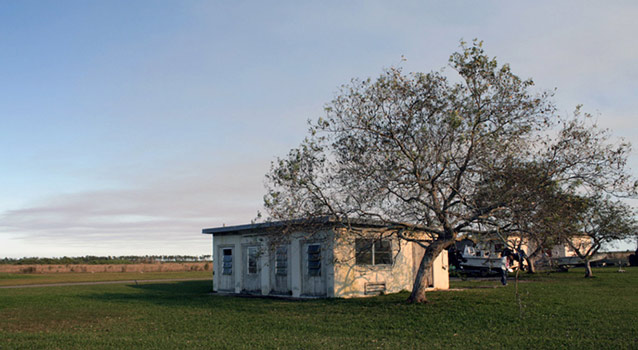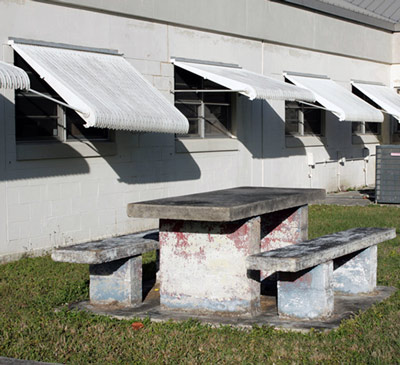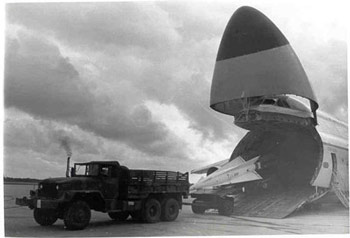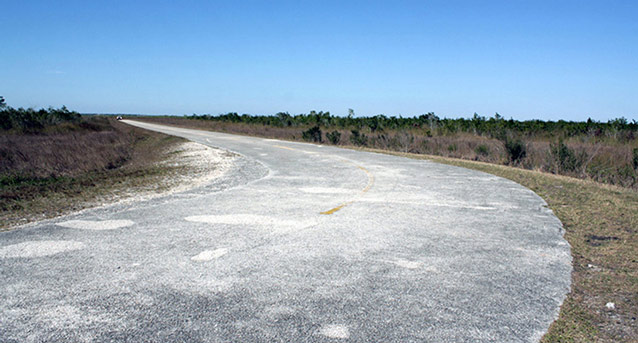
NPS Photo. 2010
Homestead, Florida
Everglades National Park is 1.5 million acres of subtropical wilderness at the southern tip of the State of Florida. The park is home to the endangered American crocodile, the eponymous Everglades kite, the Florida panther and a host of other rare and endangered species. Everglades National Park is also home to a complex system of interdependent ecosystems that include sawgrass marshes, mangroves, tropical hardwood hammocks, and cypress swamps. The importance of these attributes is evident with its recognition as a World Heritage Site, International Biosphere Reserve, and Wetland of International Importance. And this is what people most often think of when they hear about the Everglades – not its prime role in the Cold War and Cuban Missile Crisis.

NPS Photo, 2010
In October 1962, as relations with Cuban Prime Minister, Fidel Castro, escalated, United States spy planes discovered nuclear missile bases and other weapons in Cuba. The detection of weapons in Cuba stunned the United States. Military personnel began to flood south Florida in October 1962 and to prepare for a possible invasion of Cuba if diplomatic efforts failed.
With missiles in Cuba, only 90 miles away, south Florida was extremely vulnerable to a potential air strike by the Soviets. Shortly after the missiles were discovered in Cuba, both HAWK and Nike‑Hercules missile battalions were deployed to south Florida to defend against a possible attack on Miami. Missile batteries were quickly installed across south Florida as the Americans and Soviets continued negotiations.

NPS Photo, 2010
As the Cuban Missile Crisis ended, most of the military personnel brought to south Florida returned to their home bases. The United States still saw Fidel Castro and Cuba as a potential threat and decided to maintain the defensive missile battalions deployed in south Florida. A permanent, air defense system consisting of HAWK and Nike Missiles would also be set up in order to protect Miami.

NPS Photo, 2010
South Florida’s HM69 Nike Missile Base consisted of two parts. First, the Battery Control or Integrated Fire Control (IFC) where the radar arrays and operators were stationed along with the mess hall, barracks, chapel, administration and post exchange. The officers' quarters, Battery Commander and armory were also located at the IFC along with some recreational areas like basketball or tennis courts.
Then, located about one mile away, the Launch Area is where missiles were stored and prepared for launch. Three Section Barns containing three to six missiles each were manned by six soldiers per section, one of whom was the Section Chief. The guard dog kennel, missile assembly building and ready room are also located at the Launch Area. There were also various support buildings associated with each area including water pump and storage, seweage treatment, gaurd towers and the small paints, oil and liquids building.

Photo courtesy of U.S. Army
text

Photo courtesy of U.S. Army
Today, much of this history is forgotten. The IFC is now home to park offices, and the Launch Area is nearly forgotten down a long road and behind a wire fence.
But look a little closer and one can still see details in the landscape that tell this story, from the dilapidated buildings and earthworks, to small stenciled drawings in the roadways and on walls.
Visiting this Landscape

NPS Photo, 2010
Contact: (305) 242-7015
Guided Tours: Tours are offered December to April
Fees: Park entrance is $20/vehicle, or $8/pedestrain or bike (good for seven consecutive days)
Access: The park is open 365 days a year, 24 hours a day. However, some entrances are closed in the evening or seasonally, and visitor center hours vary.
Last updated: January 5, 2016
